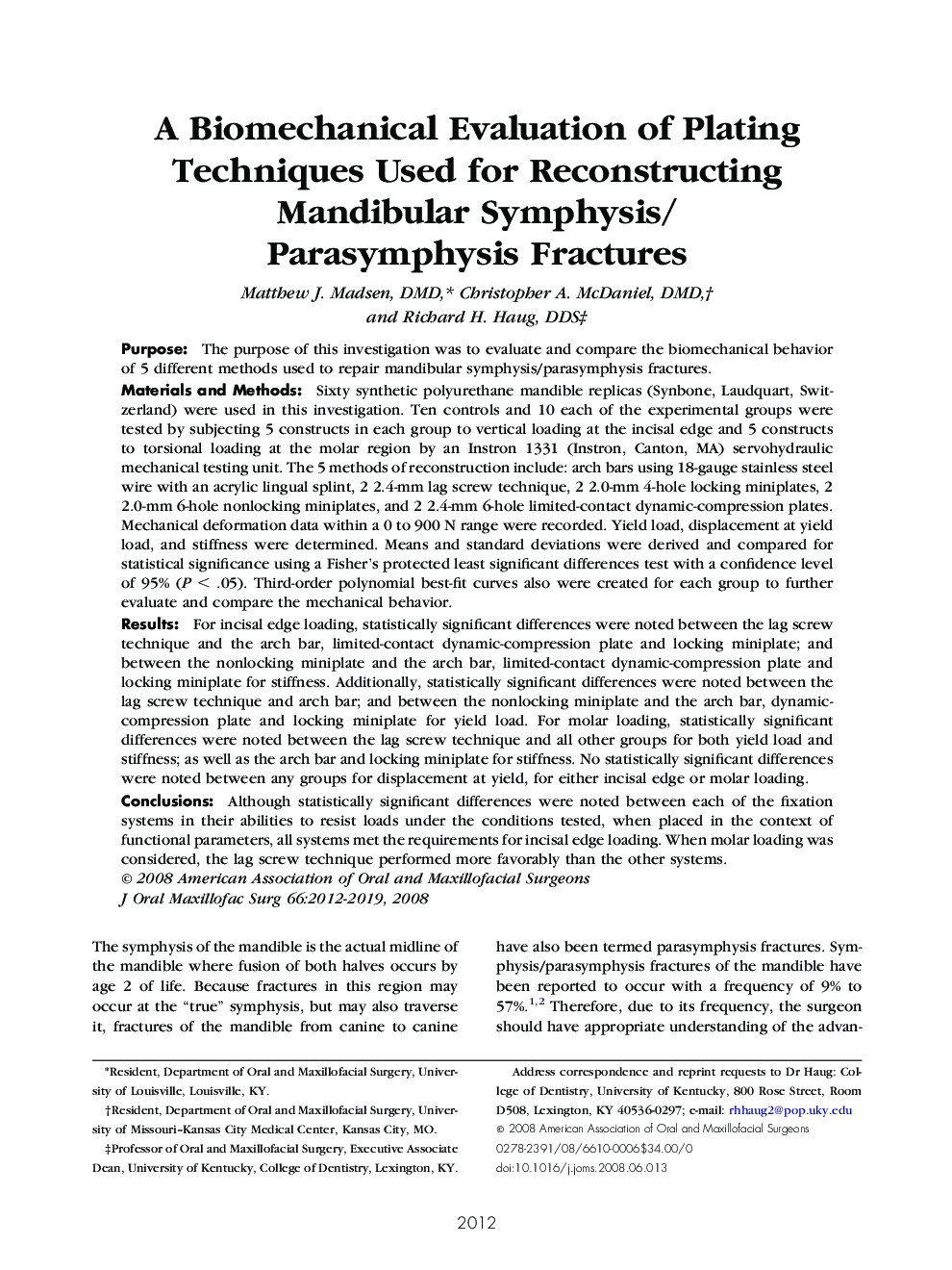| Article ID | Journal | Published Year | Pages | File Type |
|---|---|---|---|---|
| 3157469 | Journal of Oral and Maxillofacial Surgery | 2012 | 8 Pages |
PurposeThe purpose of this investigation was to evaluate and compare the biomechanical behavior of 5 different methods used to repair mandibular symphysis/parasymphysis fractures.Materials and MethodsSixty synthetic polyurethane mandible replicas (Synbone, Laudquart, Switzerland) were used in this investigation. Ten controls and 10 each of the experimental groups were tested by subjecting 5 constructs in each group to vertical loading at the incisal edge and 5 constructs to torsional loading at the molar region by an Instron 1331 (Instron, Canton, MA) servohydraulic mechanical testing unit. The 5 methods of reconstruction include: arch bars using 18-gauge stainless steel wire with an acrylic lingual splint, 2 2.4-mm lag screw technique, 2 2.0-mm 4-hole locking miniplates, 2 2.0-mm 6-hole nonlocking miniplates, and 2 2.4-mm 6-hole limited-contact dynamic-compression plates. Mechanical deformation data within a 0 to 900 N range were recorded. Yield load, displacement at yield load, and stiffness were determined. Means and standard deviations were derived and compared for statistical significance using a Fisher's protected least significant differences test with a confidence level of 95% (P < .05). Third-order polynomial best-fit curves also were created for each group to further evaluate and compare the mechanical behavior.ResultsFor incisal edge loading, statistically significant differences were noted between the lag screw technique and the arch bar, limited-contact dynamic-compression plate and locking miniplate; and between the nonlocking miniplate and the arch bar, limited-contact dynamic-compression plate and locking miniplate for stiffness. Additionally, statistically significant differences were noted between the lag screw technique and arch bar; and between the nonlocking miniplate and the arch bar, dynamic-compression plate and locking miniplate for yield load. For molar loading, statistically significant differences were noted between the lag screw technique and all other groups for both yield load and stiffness; as well as the arch bar and locking miniplate for stiffness. No statistically significant differences were noted between any groups for displacement at yield, for either incisal edge or molar loading.ConclusionsAlthough statistically significant differences were noted between each of the fixation systems in their abilities to resist loads under the conditions tested, when placed in the context of functional parameters, all systems met the requirements for incisal edge loading. When molar loading was considered, the lag screw technique performed more favorably than the other systems.
